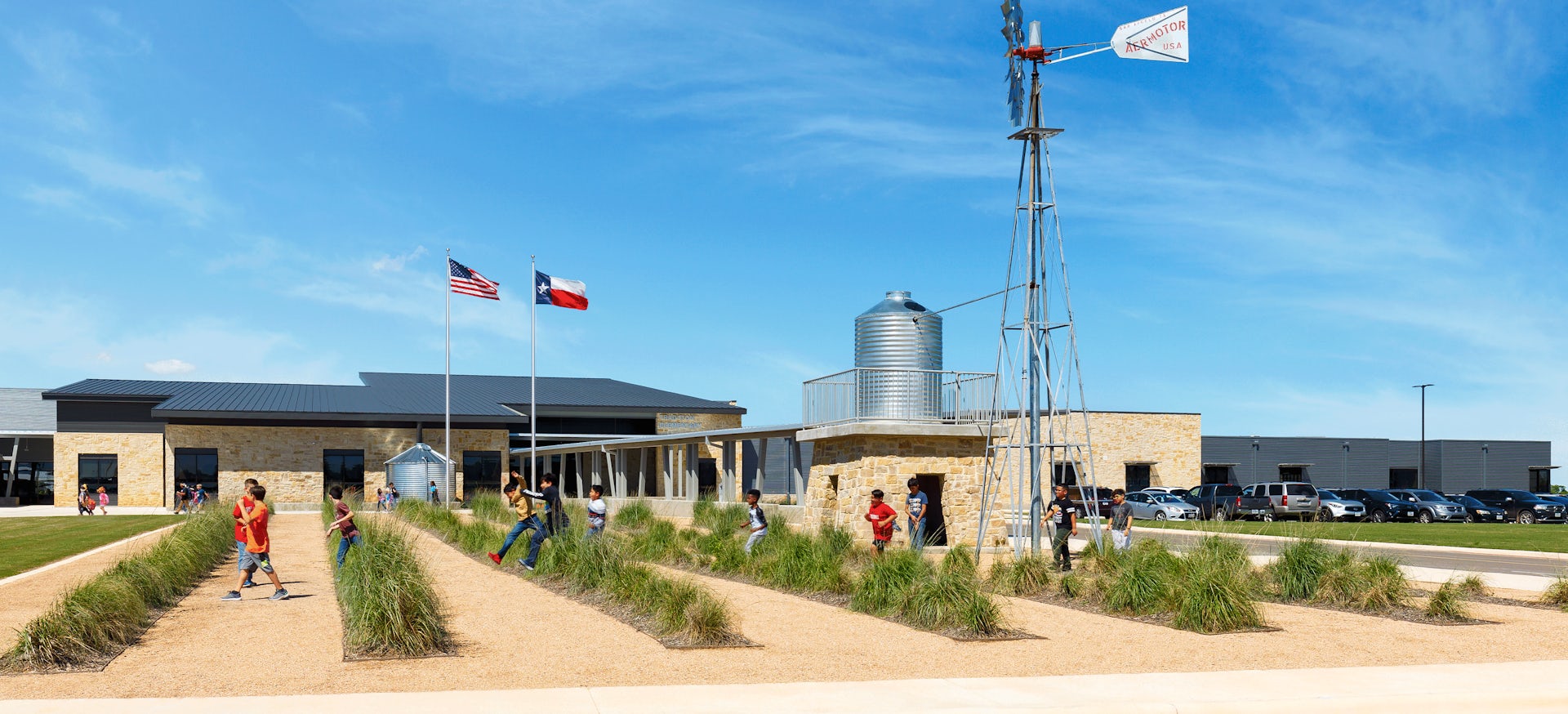A working windmill linked to a large cistern greets visitors to Tradition Elementary School in St. Hedwig, Texas, a 97,000-square-foot campus designed to help students learn about the environment, science and sustainability.
The windmill connects the school to the roots of the rural community and pumps water to irrigate the campus. Water is collected throughout the site and reused to help grow student gardens and campus-wide landscaping.
“In planning the school, we wanted to incorporate the idea of water catchment,” says LPA Principal Mark Oppelt, who served as Managing Principal. “The windmill speaks about our history, our environment and about being sustainable in the way we live.”
Tradition opened in 2018 with 42 classrooms for 920 students. It is part of East Central Independent School District, which encompasses several rural areas outside of San Antonio. LPA has been the district’s primary architect of record for 23 years and began developing a master plan for the future of the district in 2011.
The School as a Teaching Tool
Tradition Elementary School in rural Texas is designed as a living building, reflecting the community, the climate and the district’s teaching goals.
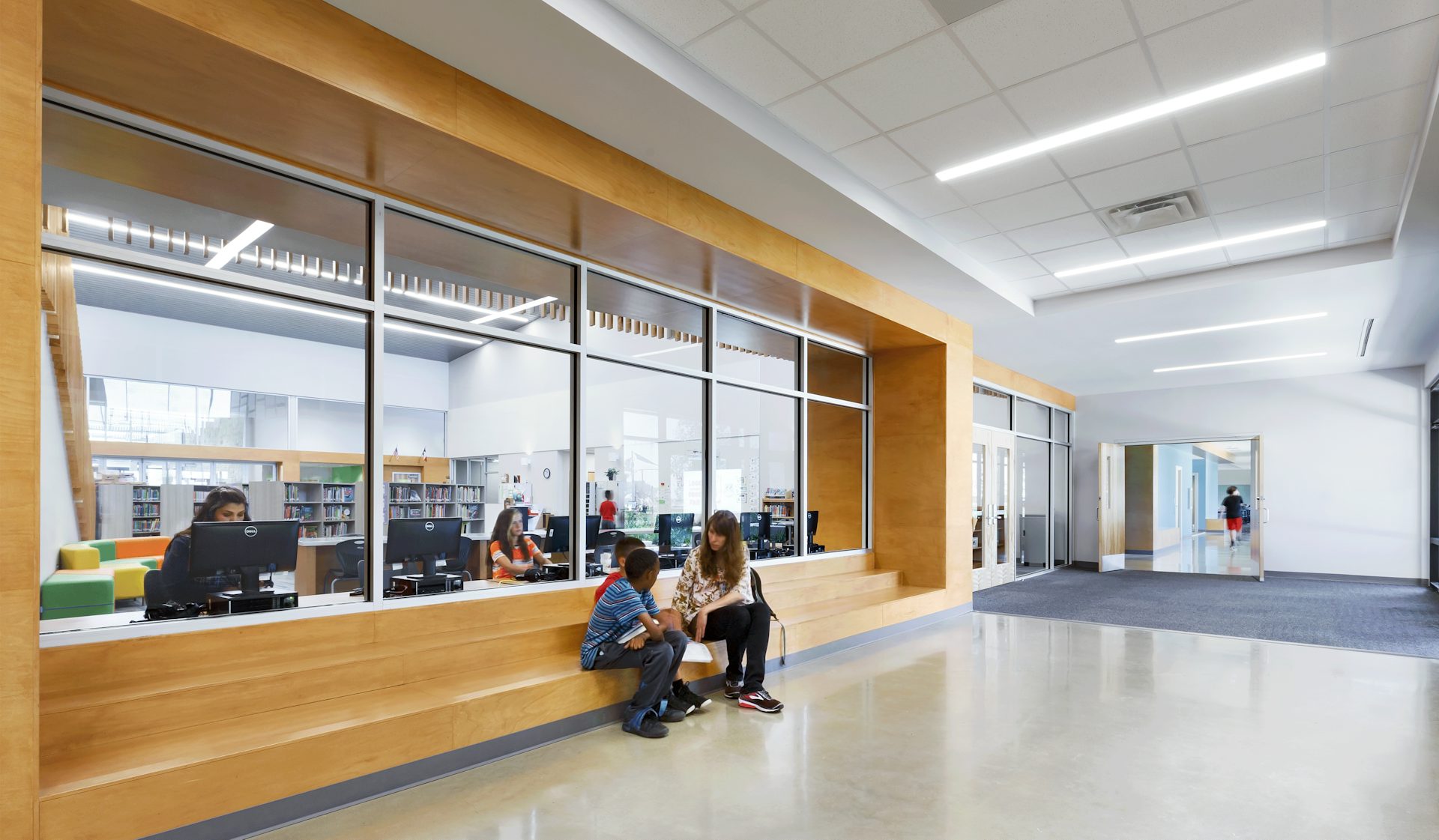
Administrators and educators viewed Tradition, a new school, as an opportunity to introduce learning environments that would prepare the school for this generation and beyond.
“We worked with teachers and stakeholders to design what they thought the future educational environments would be,” says LPA Design Director Kate Mraw. “They wanted to transition from a non-flexible environment, with the teacher at the front of the classroom, to one that allowed for more collaborative learning.”
Tradition was designed as a “living building,” with environments that are flexible and adaptable to the changing needs of teachers and students. Instead of old-school hallways, the campus features expansive collaborative spaces for art, music and science, with windows that allow students and teachers to connect beyond their classroom walls.
The centerpiece of the campus is a two-story library and media center, with a large, operable glass wall that connects it to a variety of shared spaces. The learning environments radiate out from the library, with a wide grand staircase acting as an amphitheater for student presentations and events.
“Conceptually, we hung our hat on the library being the heart of the campus, like the hub of a windmill, where the wings of the school rotate around it,” Oppelt says.
Tradition was designed as a ‘living building,’ with environments that are flexible and adaptable to the changing needs of teachers and students.
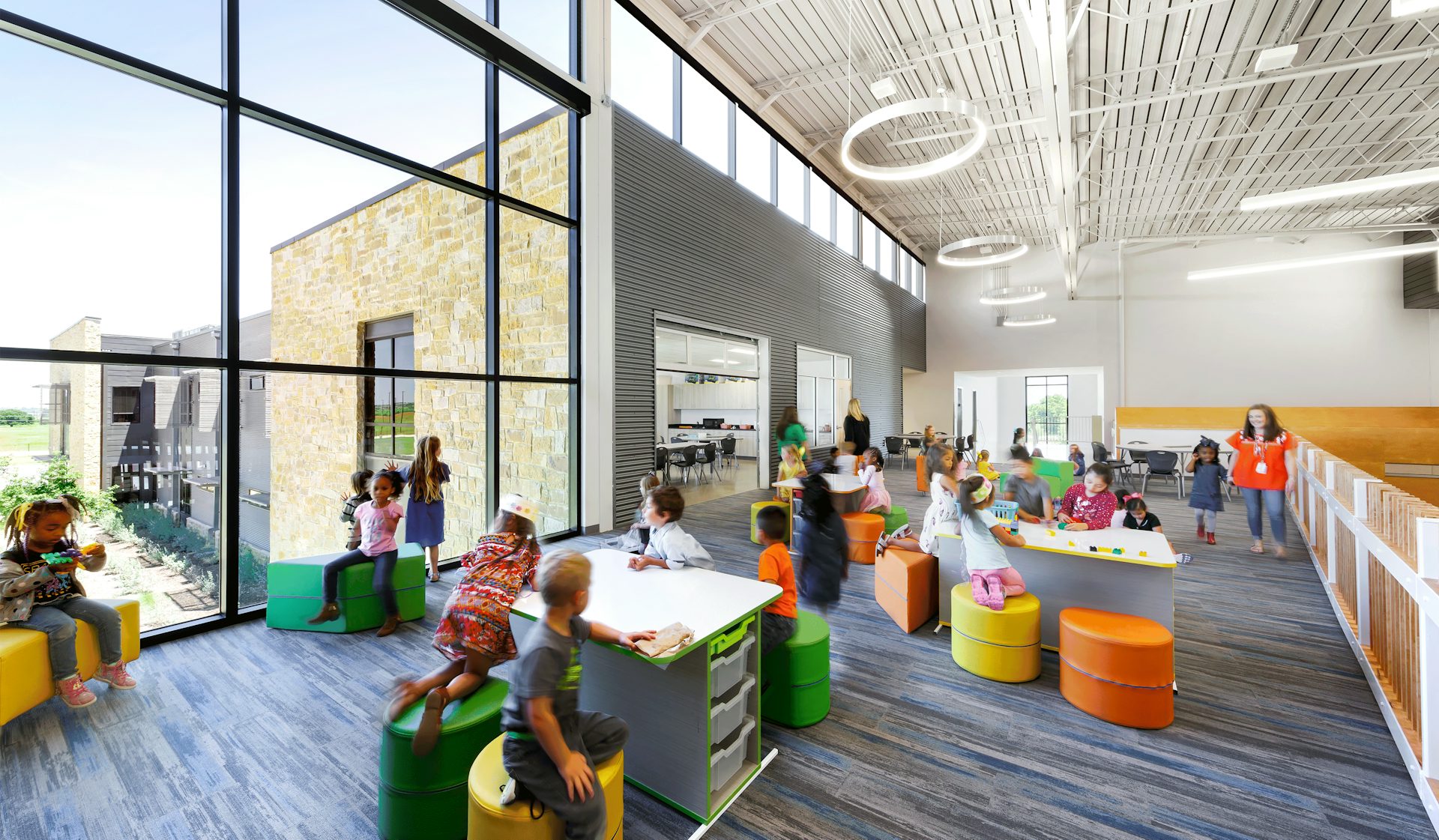
Inside the classrooms, writable surfaces and display boards were placed at student height to make learning more student-centered and engaging. Exterior porches were designed as shared learning environments; the outdoor learning spaces include an art lab, work counters with sinks and space for demonstrations to happen outside.
The LPA design team relied on many common features of the region, including grain silos and large barns, to help inform the school design. The south-facing roofs, metal wall panels and plentiful limestone reflect the heritage of the region, as well as a traditional response to the area’s climate.
The drought-tolerant landscaping includes native trees such as live oak, cedar elm, bur oak, mountain laurel and fruitless Texas persimmon. At the front, LPA landscape architects designed low-maintenance bunch grass in regimented rows. “It’s familiar to the community, like part of a farm,” Oppelt says.
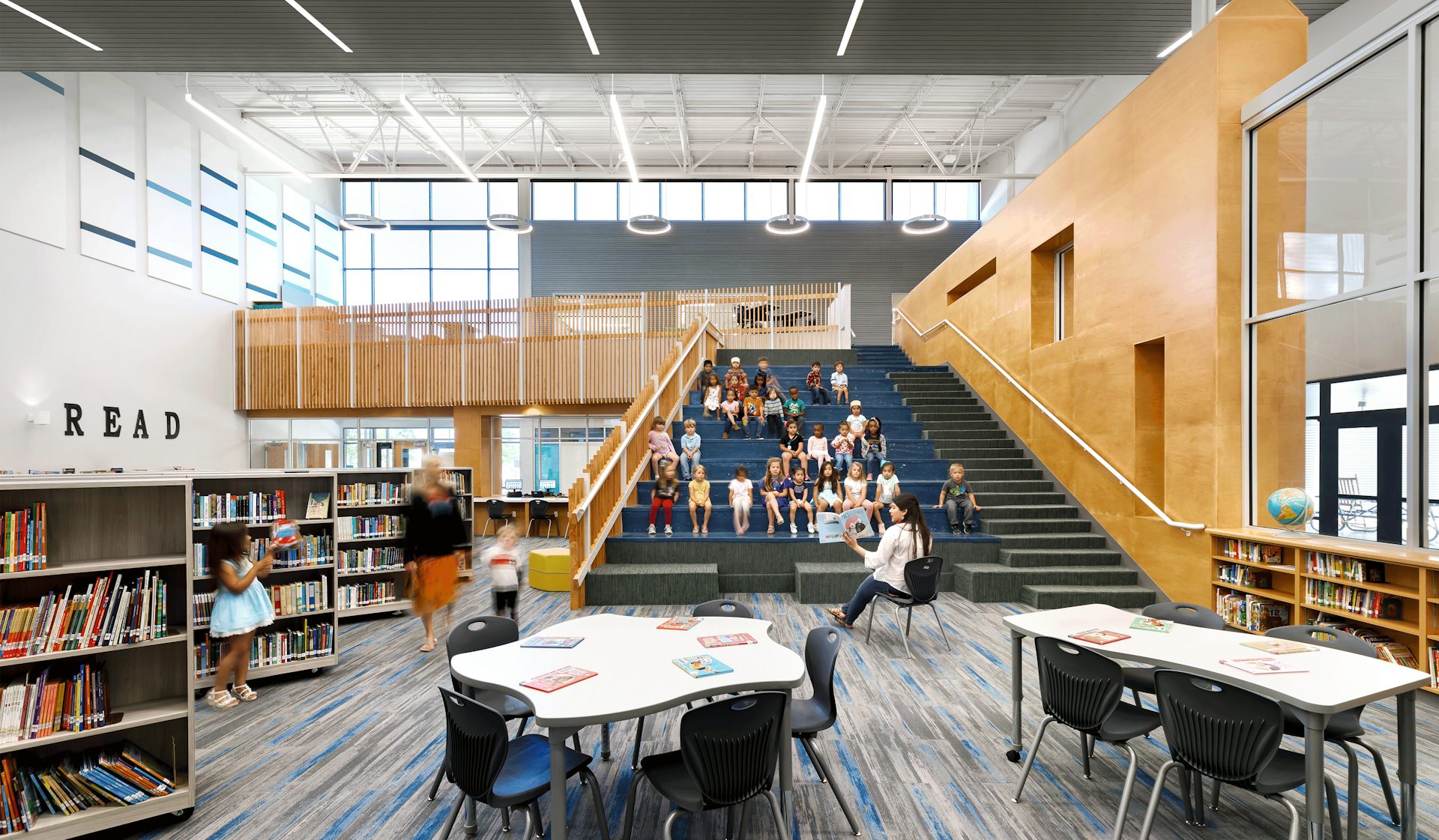
Energy efficiency is built into every aspect of the design, Oppelt says. Proper building orientation and passive solar techniques in the design of openings allow an abundance of natural light to penetrate throughout the facility without adding surplus solar gain to the cooling load. Operations costs were cut with LED lighting, controlled with motion-sensitive switches; high-performance AC equipment; dual-insulated windows; and Energy Star appliances.
Many aspects of the energy and water systems are designed as teaching opportunities. From a stairway inside the school, students can see current water levels in a two-story cistern. Energy systems, conservation and fuel saving are on display every day.
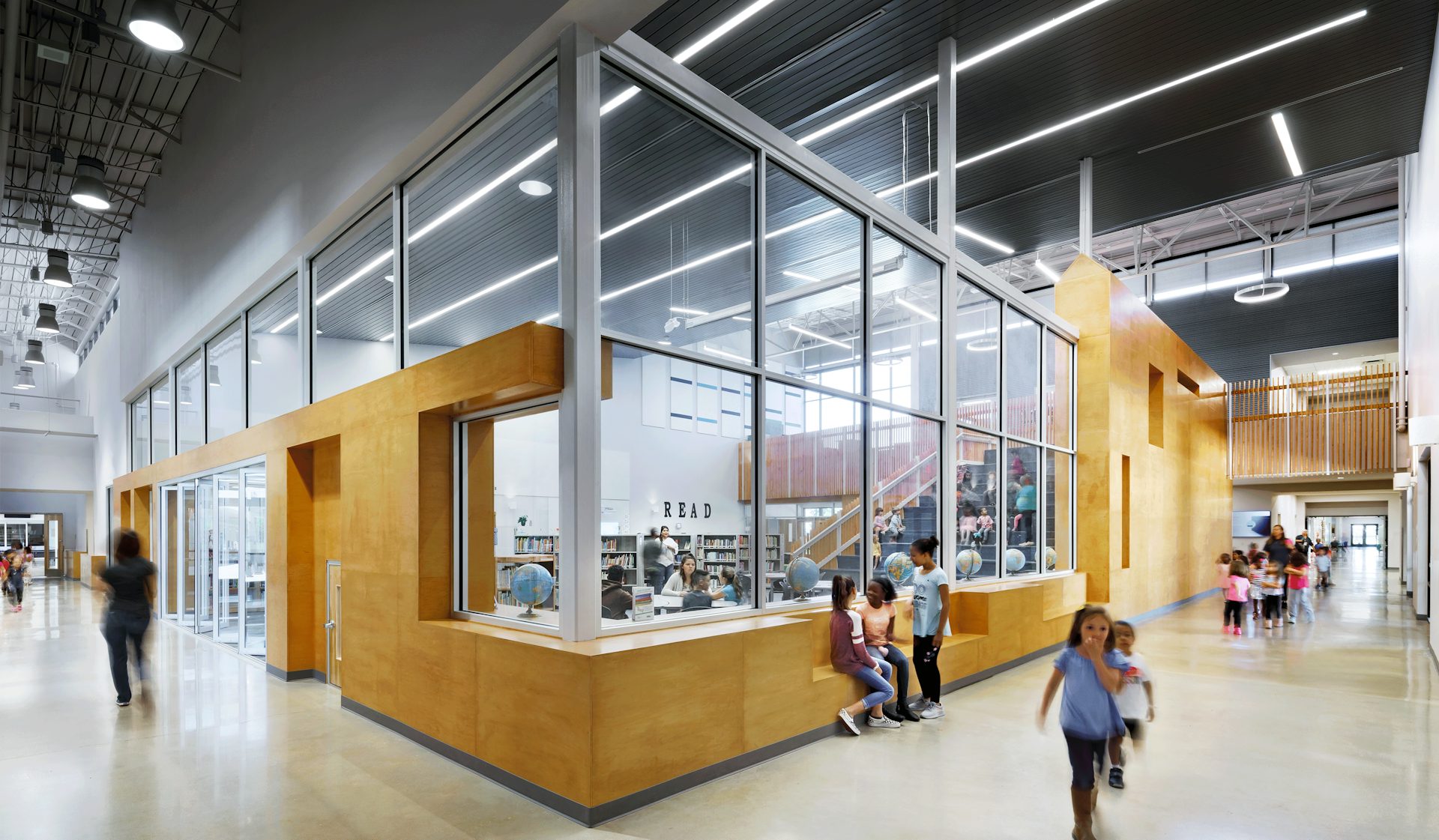
In post-occupancy discussions, Tradition faculty report that collaborative spaces have helped in myriad ways. In addition to serving as locations for guided reading and science activities and parent-teacher engagement, the spaces have been embraced for teacher-to-teacher engagement, co-teaching and parallel teaching. Faculty members also have found that less experienced teachers benefit from the visibility into other classrooms, as it builds a culture of trust and connections.
Concepts developed in Tradition were also incorporated into the renovations of four older elementary campuses in the East Central district, Mraw says. The renovation projects focus on the same quality of dynamic spaces to support student engagement.


